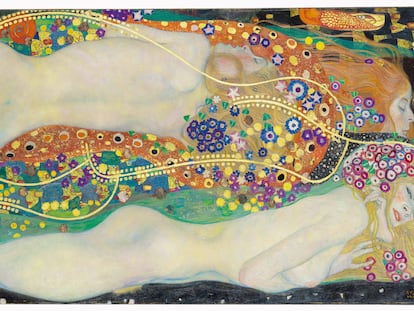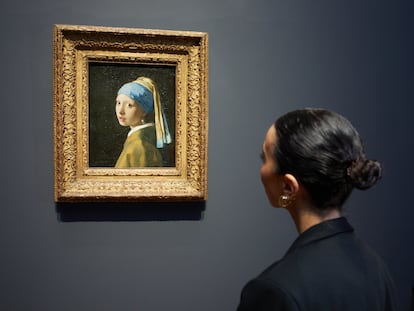One of the largest private collections of art on paper hides in plain sight in the heart of Paris
Since the mid-20th century, the foundation created by Frits Lugt has collected thousands of drawings and prints by renowned European masters like Leonardo da Vinci, Rembrandt and Goya
The Fondation Custodia’s art collection in Paris may be unknown to the general public. Still, it couldn’t be more visible, just a stone’s throw from the Assemblée Nationale, with the Luxor Obelisk and Grand Palais in the background. One of the world’s most outstanding private art collections, the foundation owns five centuries of European drawings and prints. It includes gems from the Royal Collection of the King of England and occupies two adjoining pre-Haussmann-era mansions in the heart of Paris. The buildings house the institution’s headquarters and is also the home of its director. These urban palaces with huge windows to let in the city’s famous light were acquired in 1947 by a Dutchman, Frits Lugt (1884-1970), to house the thousands of works of art he collected and treasured throughout his life. Lugt’s collection also includes furniture and antiques, and the foundation has expanded its activities to fulfill the philanthropist’s vision of contributing to art history.

The foundation owns approximately 7,000 drawings, 15,000 engravings, 450 paintings and 55,000 signed letters, mainly by Dutch and Flemish artists, but also French, Italian, German and other Europeans, with occasional contributions by Spanish artists like Goya and Sorolla. Lugt’s original collection included 21 pieces by his favorite — Rembrandt — and two of the seven existing signed Rembrandt letters. The foundation’s operating expenses, salaries of 25 employees and new acquisitions are financed by the “small fortune” bequeathed by Lugt and his wife, Jacoba Lugt-Klever, a wealthy heiress. The collection recently added 500 oil sketches, many done outdoors, which provide “an overview of this technique used from 1780-1880, before impressionism emerged,” says Hans Buijs, the curator and interim director of the institution after Ger Luijten suddenly died in December 2022. While many of these sketches hang on the walls, the collection’s drawings must be protected from light for proper preservation. Unlike the vast majority of institutions that keep their drawings in boxes, the foundation preserves them in the traditional manner — between the pages of original leather albums (themselves works of art) stacked on the shelves of several secure rooms.
Although the foundation’s collection can boast of having works by masters like Rembrandt, Bruegel, Rubens, Watteau and Ingres, the spirit of Lugt’s collection is to promote the work of lesser-known artists. “He [Lugt] was very fond of simple motifs,” says Buijs, pointing to some sketches of idealized landscapes. The museum’s temporary exhibitions have the same objective. Two exhibitions running through May 14 display drawings of decorative art objects from the Rijksmuseum collection in Amsterdam (Créer. Dessiner pour les arts décoratifs 1500-1900) and another of Dutch works on paper from the 18th century from the Royal Museum of Fine Arts of Belgium in Brussels (Cabinet de dessins néerlandais. Le XVIIIe siécle). “Being a private foundation, we don’t have the pressure of having to mount spectacular exhibitions,” says Buijs, proud of the demand for the foundation’s collection from institutions worldwide. “They help us spread the word about less famous artists.”

The renaissance of Jacobus Vrel
This year’s big splash will come in June when the foundation will exhibit a complete retrospective of Jacobus Vrel (c.1630-1680), an obscure painter of the Dutch Golden Age described as “Vermeer’s precursor.” Cécile Tainturier, the curator of the Vrel collection on loan from the Mauritshuis Museum in The Hague, said Vrel and Vermeer shared a taste for enigmatic environments and quiet, intimate scenes. Vrel’s paintings were unusual for the period in that they often depicted almost empty spaces and bore many different signatures to identify his work. Vrel painted figures with their backs turned as they looked at something through a window or doorway. Or people in moments of introspection with their faces hidden. Tainturier says Vrel was ahead of his time in painting the “act of looking,” which reflects the painter’s role and human nature.
Another primary mission of the foundation is its online database of collector’s marks — the stamped initials or other marks that collectors usually put on the back of artworks to identify their collections. Frits Lugt was the first person to document these marks, and the foundation’s online database now contains 9,000 entries. Foundation staff are currently analyzing and digitizing another 3,000 marks. “It is the world’s reference database for collectors’ marks,” says Peter Fuhring, the scientific advisor for the project. Historians, experts and auction houses use this tool to trace the provenance of European and American works on paper and even contribute to research into their attributions.
Sign up for our weekly newsletter to get more English-language news coverage from EL PAÍS USA Edition
Tu suscripción se está usando en otro dispositivo
¿Quieres añadir otro usuario a tu suscripción?
Si continúas leyendo en este dispositivo, no se podrá leer en el otro.
FlechaTu suscripción se está usando en otro dispositivo y solo puedes acceder a EL PAÍS desde un dispositivo a la vez.
Si quieres compartir tu cuenta, cambia tu suscripción a la modalidad Premium, así podrás añadir otro usuario. Cada uno accederá con su propia cuenta de email, lo que os permitirá personalizar vuestra experiencia en EL PAÍS.
¿Tienes una suscripción de empresa? Accede aquí para contratar más cuentas.
En el caso de no saber quién está usando tu cuenta, te recomendamos cambiar tu contraseña aquí.
Si decides continuar compartiendo tu cuenta, este mensaje se mostrará en tu dispositivo y en el de la otra persona que está usando tu cuenta de forma indefinida, afectando a tu experiencia de lectura. Puedes consultar aquí los términos y condiciones de la suscripción digital.
More information
Archived In
Últimas noticias
Iranian women are also defying the taboo of riding motorcycles (and without a license)
David Bowie, the galactic thinker who encouraged us to break new ground
John Berger and the loss of rural culture
From police officer to bloodthirsty kidnapper: Terror in Mexico during the years of ‘The Ear Chopper’
Most viewed
- David King, chemist: ‘There are scientists studying how to cool the planet; nobody should stop these experiments from happening’
- Reinhard Genzel, Nobel laureate in physics: ‘One-minute videos will never give you the truth’
- Oona Chaplin: ‘I told James Cameron that I was living in a treehouse and starting a permaculture project with a friend’
- Mexico completes its trade shift with the entry into force of tariffs on China and countries without trade agreements
- Sinaloa Cartel war is taking its toll on Los Chapitos











































